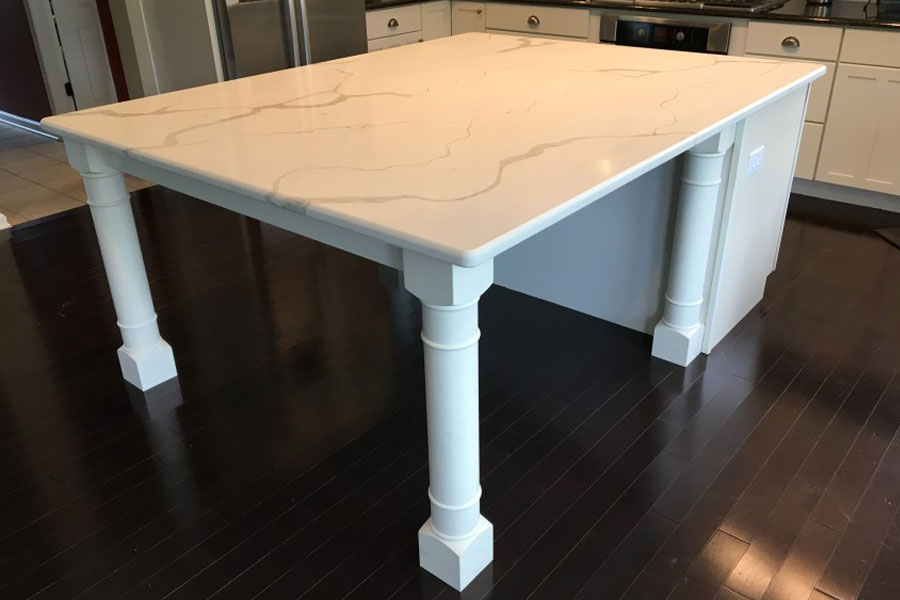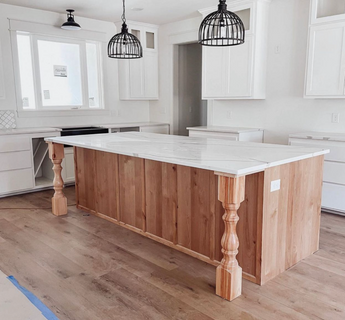A Guide to Selecting the Suitable Cooking Area Island for Your Home
Choosing the best cooking area island is a multi-faceted choice that can dramatically impact both the performance and appearances of your home. Recognizing your kitchen area's spatial characteristics is the first action, making sure that the island fits flawlessly without disrupting the circulation. Past area factors to consider, identifying the main function of the island-- be it for dish preparation, dining, or additional storage space-- is important. The choice of materials and coatings also plays a vital duty in balancing the island with your kitchen's total style. As we explore these components further, the subtleties of each decision will become clear.
Assessing Your Space
Before selecting a cooking area island, it is important to thoroughly analyze your room to ensure the enhancement will certainly be both practical and aesthetically pleasing. Begin by determining the offered location, consisting of the width, length, and height of the cooking area. Accurate measurements are essential to stay clear of purchasing an island that bewilders the space or one that is overmuch small.
Take into consideration the existing format and exactly how the island will integrate with the present website traffic circulation. A well-placed island needs to not hamper or obstruct pathways accessibility to important home appliances, such as the fridge, cooktop, and sink. Leave adequate clearance space-- typically around 36 to 48 inches on all sides-- to permit comfy motion and work space efficiency.
Next, review the natural light and sightlines within your kitchen. An island that blocks a window or disrupts aesthetic cohesion can make the room feel confined and dark. Think of exactly how the island's placement will certainly influence illumination and presence, guaranteeing it boosts instead of diminishes the kitchen area's setting.
Determining the Function
Establishing the purpose of your kitchen island is an essential step in guaranteeing it meets your certain requirements and preferences. Before delving into layout or dimension considerations, it is vital to clarify what main function the island will offer in your kitchen. Will it be a central hub for meal prep work, a casual eating area, or possibly an extra storage space option?
In addition, adequate counter area for blending and cutting, along with available storage space for cooking area devices and ingredients, can transform the island into an effective workstation. Conversely, if the island is intended to facilitate social interactions or serve as a dining area, seating arrangements come to be critical.

Selecting the Right Dimension
Choosing the appropriate dimension for your kitchen island is a balance of capability and space optimization. A perfect cooking area island must provide sufficient work area while ensuring that motion around the kitchen area stays unimpeded. Begin by determining your kitchen area space; a minimal clearance of 36 to 42 inches around the island is required to permit comfy movement and access.
The measurements of the redirected here island must show its desired use. If the island will certainly offer mainly as a prep location, a width of 24 to 36 inches might be sufficient.

Lastly, guarantee that the island's size matches the general kitchen format, staying clear of any type of frustrating visibility that may diminish the cooking area's aesthetic and energy - kitchen island legs. Careful preparation and exact measurements will help you achieve a unified and reliable kitchen area environment
Picking Products and Finishes
After determining the proper size for your kitchen island, the next action includes picking appropriate products and finishes. The choice of materials substantially impacts both the visual allure and functionality of your cooking area island. Popular materials for counter tops include quartz, butcher, and granite block, each offering distinct benefits.
In addition to the kitchen counter, take into consideration the materials for the space station. Strong timber provides a classic, strong look, while stainless-steel gives a streamlined, contemporary appearance and is simple to tidy. Painted surfaces can introduce a sprinkle of shade, with alternatives varying from muted pastels to bold, vibrant colors.
When picking finishes, ensure they enhance the general cooking area design. Matte coatings provide a modern feeling, while glossy surfaces can create a polished, high-end look. Take notice of the durability of surfaces, particularly in high-traffic locations, to maintain the island's appearance in time. Picking the best materials and coatings will enhance both the performance and visual allure of your cooking area island.
Integrating Useful Attributes
Including functional features right into your cooking area island can dramatically boost its energy and comfort, transforming it into a versatile centerpiece of your kitchen. One important function to consider is additional storage space. Integrating cupboards, drawers, and open shelving can provide much-needed area for cooking equipment, utensils, and little devices, aiding to maintain a clutter-free atmosphere.
Another beneficial addition is a built-in sink or cooktop, which can improve meal prep work and clean-up processes. A navigate here sink can facilitate jobs such as washing veggies and cleansing dishes, while a cooktop can permit food preparation straight on the island, promoting an extra interactive and social cooking experience.
Think about integrating seating alternatives, specifically if your cooking area functions as a casual eating area. Bar stools or integrated benches can change the island right into a multifunctional space for click to investigate meals, homework, or laid-back gatherings.
Last but not least, incorporating electric outlets right into your kitchen area island can boost its usefulness. Electrical outlets give convenient accessibility for tiny kitchen area appliances, billing stations for electronic devices, and added illumination choices.
Verdict

Before selecting a kitchen area island, it is important to completely analyze your area to make sure the enhancement will certainly be both functional and visually pleasing.Selecting the best dimension for your kitchen area island is a balance of performance and space optimization. kitchen island legs. An optimal kitchen area island ought to provide sufficient workspace while ensuring that motion around the kitchen area continues to be unimpeded.Including practical functions into your cooking area island can dramatically enhance its utility and comfort, transforming it into a flexible focal point of your kitchen.In final thought, selecting the excellent kitchen area island demands a comprehensive analysis of the available area, clarity concerning its key function, and mindful factor to consider of the ideal dimension and materials